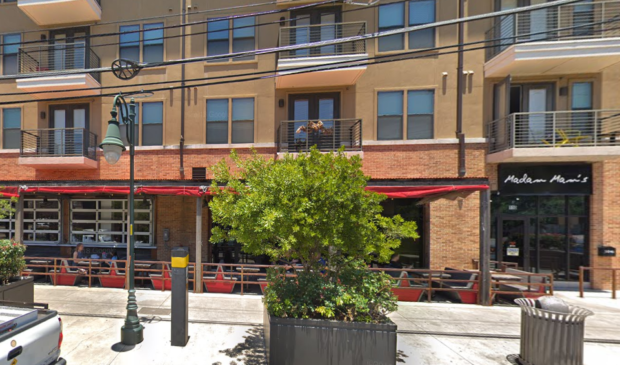To light or not to light, that is the question
Wednesday, December 19, 2018 by
Jessi Devenyns While no one wants to light West Campus up like the Las Vegas Strip, with such density comes a need for signage that can be seen both night and day.
“We think that (not having signage) may be a safety concern if people are too busy looking at their phone to see where they’re going,” Bragg Smith of the Phoenix Property Company said at the Dec. 10 meeting of the Board of Adjustment.
In order to remedy safety concerns and ensure that students and residents know exactly where they are in relation to West Campus, he came to the board to ask for a variance that would grant the student housing complex at 510 W. 26th St. two backlit LED signs. Currently, there is one non-illuminated sign on the front of the building.
Smith pointed to the fact that the building was constructed prior to the 2017 University Neighborhood Overlay that prevents such signage, and that the landscaping in front of the building presents a hardship for the current configuration of the signage. “As this tree grows and all these plants grow it will be harder to see our lone sign,” he explained. According to him, adding two additional signs situated on the corners will help their business not get lost in the sea of housing complexes.
He assured board members that only the letters would be lit, not the entire encasement of the sign.
“As long as the cabinet is not completely lit I didn’t think it was over the top, personally,” said Board Member Melissa Hawthorne. Other board members, however, were not so accepting of the proposal. “If you got one lit (sign) or two unlit (signs), which one would you prefer?” asked Board Member Bryan King.
Smith stuck to his guns and said he would prefer two lit signs, but when pressed he relented and said that he would settle for two unlit signs over one that was illuminated.
In order to find a compromise, Board Member Brooke Bailey suggested that they limit the wattage of the sign. The industry standard for a retail sign is 7,100 kelvins, but Matt Wilson of Chandler Signs explained that if the kelvins were limited to even as low as 5,000, it would still provide sufficient illumination. Limiting the color emanating from the sign reduces the brightness, he explained.
While Wilson and Smith acknowledged that the vast majority of people rely on Google Maps and other mapping apps to find their way to their destinations, the two noted that a sign is a necessary confirmation that people have arrived at the correct address. “As someone who lived on campus for four years … I can attest that this would have helped,” Smith said.
The board narrowly approved the variance to allow two illuminated signs on the building, with Chair William Burkhardt and Board members King, Bailey, Don Leighton-Burwell and James Valadez voting against the motion.
Photo courtesy of Google Maps.
The Austin Monitor’s work is made possible by donations from the community. Though our reporting covers donors from time to time, we are careful to keep business and editorial efforts separate while maintaining transparency. A complete list of donors is available here, and our code of ethics is explained here.
You're a community leader
And we’re honored you look to us for serious, in-depth news. You know a strong community needs local and dedicated watchdog reporting. We’re here for you and that won’t change. Now will you take the powerful next step and support our nonprofit news organization?










